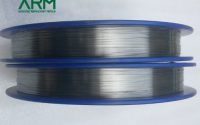Molybdenum Heating Elements Used in Industrial Furnaces
Introduction
Molybdenum heating elements are a key component in modern industrial furnaces and high-temperature systems. Whether in electric furnaces, vacuum furnaces, or high-temperature ovens, molybdenum heating elements contribute significantly to operational efficiency and product quality. Let’s explore the role of molybdenum heating elements in these three types of high-temperature systems.
Molybdenum Heating Elements: Key Properties
Before diving into their applications, it’s important to understand why molybdenum is so well-suited for high-temperature environments:

- High Melting Point: Mo has an exceptionally high melting point of 2,623°C (4,753°F), making it ideal for applications where other materials, such as steel or aluminum, would melt or degrade.
- Thermal Conductivity: Its ability to conduct heat efficiently ensures even heat distribution within the furnace, which is essential for processes that require uniform temperature profiles.
- Resistance to Thermal Shock: Mo maintains its structural integrity even under rapid temperature fluctuations, which is particularly important in applications that involve frequent heating and cooling cycles.
- Corrosion Resistance: In controlled environments (like vacuum or inert atmospheres), Mo resists oxidation, which enhances the longevity and reliability of the heating elements.
1. Molybdenum Heating Elements in Electric Furnaces
Electric furnaces are widely used across industries for metal processing, heat treatment, and ceramics production. Molybdenum heating elements are commonly used in these furnaces.

– Metal Heat Treatment: Molybdenum heating elements are essential in the heat treatment of metals such as steel, aluminum, and titanium. These elements help achieve specific temperatures required for processes like hardening, quenching, and tempering.
– Ceramic Sintering: In the production of ceramics, especially advanced materials like silicon carbide and zirconia, precise and consistent heating is crucial. Molybdenum heating elements are used in electric furnaces to sinter ceramics by applying controlled high temperatures over extended periods, enabling the materials to achieve their desired hardness and mechanical properties.
– Glass and Semiconductor Processing: Mo heating elements are also used in the manufacturing of glass and semiconductors, where exact temperatures are required for melting, molding, or coating processes. Molybdenum’s resistance to oxidation in these high-temperature environments makes it a preferred choice in electric furnaces.
2. Molybdenum Heating Elements in Vacuum Furnaces
Vacuum furnaces are used for heat treatment, brazing, and sintering of materials in an oxygen-free environment. Molybdenum heating elements are particularly well-suited for these applications due to their performance in vacuum conditions and their ability to maintain structural integrity without oxidation.
– Aerospace and Automotive Industries: In these industries, vacuum furnaces are used to process high-performance alloys and components that must withstand extreme conditions.
– Semiconductor Manufacturing: Mo heating elements are also used in vacuum furnaces for the processing of semiconductor components. The absence of oxygen in the vacuum environment prevents the oxidation of sensitive materials, allowing for the precise heating and bonding of various components.
– Metal Alloys: Molybdenum is often used in the production of high-performance metal alloys, including tungsten, molybdenum itself, and superalloys. Vacuum furnaces equipped with molybdenum heating elements enable the controlled melting and alloying of these metals.
3. Mo Heating Elements in High-Temperature Ovens
High-temperature ovens, including those used in industries like ceramics, heat treatment, and material testing, require heating elements that can deliver consistent and reliable heat over long periods.
– Ceramic Firing and Sintering: High-temperature ovens used for firing ceramics benefit from molybdenum heating elements, which provide precise and uniform heating to ensure the desired properties of the final product.
– Metal Sintering and Powder Metallurgy: In powder metallurgy, where metal powders are compacted and heated to form solid components, molybdenum heating elements are used in high-temperature ovens to sinter metals at temperatures approaching their melting points.
– Polymer Curing: High-temperature ovens used for curing polymer composites also use molybdenum heating elements. The ability of molybdenum to provide high, stable temperatures is vital in curing processes that require uniform heat distribution across large surface areas.
Conclusion
Molybdenum heating elements are indispensable in high-temperature industrial applications, particularly in electric furnaces, vacuum furnaces, and high-temperature ovens. Their exceptional performance in extreme conditions, resistance to thermal shock, and durability make them the ideal choice for these industries. For more heating element products, please check Advanced Refractory Metals (ARM).



